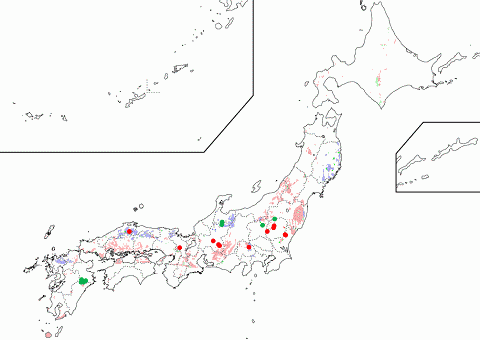Pneumatolytic Deposit
Chemical Process (Liquid-phase Growth) - Open system under ground
Index Minerals
Molybdenite, Cassiterite, Wolframite, Fluorite, Topaz
Required Geological Setting
Associated metasomatic zones
High-T silicified zone, Epidote-Actinolite zone
Occurrence
Vein-type deposit formed by 300-500 degree hydrothermal fluid originated from acidic S-type granite (ilmenite-series) magmatic activities. Origin of hydrothermal fluid is magmatic water from magma and/or meteoric water. Meteoric water is circulated by heat of magma. This type of deposits is formed at shallow circumstances by hydrothermal fluid rich in vapor constituent whereas High-T hydrothermal deposits are formed at deep circumstances by same 300-500 degree hydrothermal fluid poor in vapor constituent. Typical elements concentrated are W, Sn, F. Host of deposits are plutonic rocks or basements of plutonic rocks. Mineral assemblages of this type of deposits are similar to those of Miarolitic pegmatites and Beryl type rare-element pegmatites.

Distribution of Pneumatolytic Deposits described in this site. Red dots are pneumatolytic deposits, and green dots are pneumatolytic deposits combined with skarn. Red is ilmenite-series granite, and blue is magnetite-series granite.
Mineral Assemblages (Ore)
Molybdenite, Cassiterite, Wolframite, Pyrite, Bismuth
Mineral Assemblages (Gangue)
Quartz, Fluorite, Topaz, Muscovite
Locality
- Takatori Mine (Ferberite)
- Ebisu Mine (Wolframite)
- Togane Mine (Wolframite)
- Komaki Mine (Wolframite)
- Itaga Mine (Andalusite)
- Otani Mine (Cassiterite, Scheelite)
- Taisho Mine (Cassiterite)
- Ichiyanagi Mine (Löllingite)
- Takane Mine (Bismuth)
- Karasawa Mine (Bismuth)
- Takemori (Dravite)